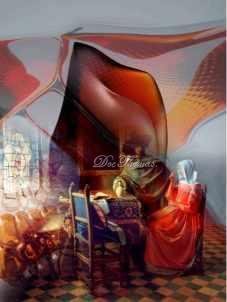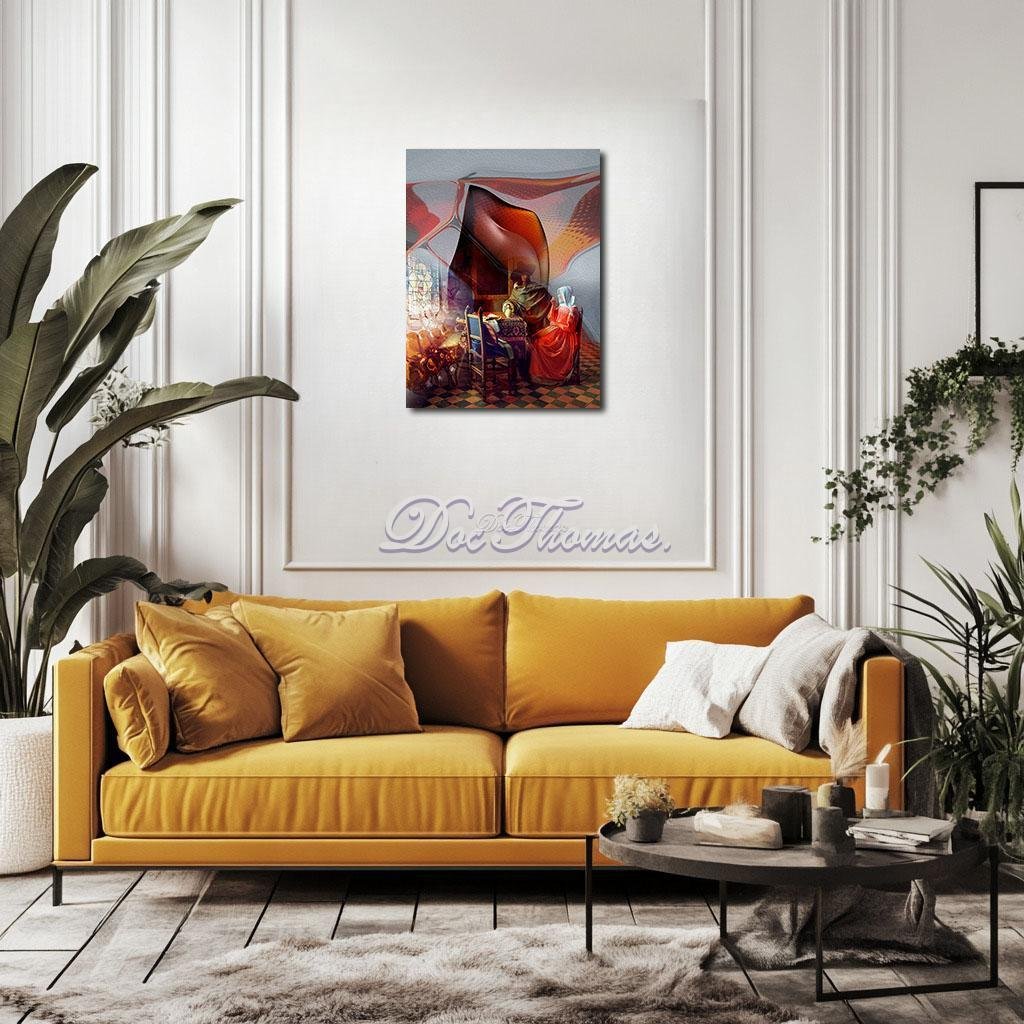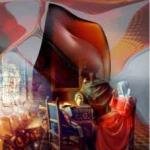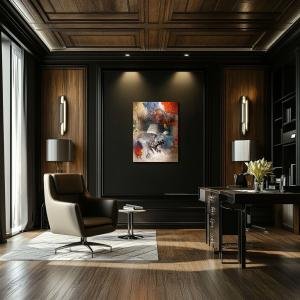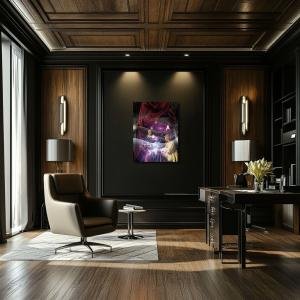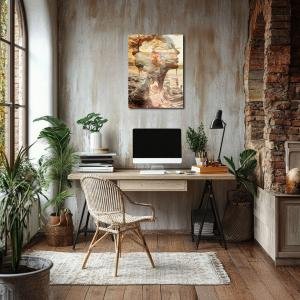Veins of Porcelain: Beneath the Glaze of Intention
Veins of Porcelain: Beneath the Glaze of Intention reinterprets Vermeer’s The Wine Glass as a surreal commentary on emotional viscosity and silent negotiation. The figures are enveloped in ribbons of red and amber, where molten wine becomes time itself. The woman’s crimson gown and the man’s subdued shadow fuse into an atmosphere of tension and pause. The original domestic stillness melts into a soft distortion—glassy folds, slow movement, and glinting fragments—symbolizing how ritual and expectation reshape truth. Through saturated color and layered textures, this piece speaks to the complexities hidden behind politeness, where affection, consent, and power quietly entwine in liquid light.
Please see Below for Details…
Hotline Order:
Mon - Fri: 07AM - 06PM
404-872-4663
Veins of Porcelain: Beneath the Glaze of Intention reimagines Johannes Vermeer’s The Wine Glass as a meditation on emotional ambiguity and the slow, viscous movement of consent, ritual, and unspoken social performance. The original’s quiet tension—a woman sipping wine under the gaze of a man—becomes here an allegory for time itself folding into emotional viscosity. Through a surreal layering of textures and distorted forms, the wine glass no longer sits merely on the table—it spills across the atmosphere, stretching itself into abstract ribbons of red, amber, and longing.
The architectural serenity of Vermeer’s domestic space remains intact, but now it feels suspended within a melted hourglass. The figures—he in shadowed restraint, she draped in a blood-tinted gown—are no longer simply actors in a courtship. They are enclosed, almost embalmed, within the molten swell of a larger narrative about societal roles, gendered performance, and the unclear boundary between desire and expectation. The wine, which once glinted politely in a goblet, is now omnipresent—its color bleeding into the air, swallowing the figures in translucent folds of red and orange, creating both heat and pressure.
Color becomes the primary narrative in this transformation. Deep vermilion and warm claret tones pool around the woman’s dress and rise through the composition like vapor—indicating not just the act of drinking but the state of surrender. Her dress, once soft in hue, now pulses with saturated crimson and whispers of black, suggesting passion under constraint. The man beside her, once gentlemanly and reserved, is shadowed in olive green and tarnished bronze, his intentions obscured by reflective folds of red that press between them like an unseen breath. Amber light from the stained glass window struggles to pierce the heavy curtain of distortion, giving the room a strangely pressurized luminescence. The checkered floor tilts subtly, grounding the image but reminding us of the careful orchestration beneath spontaneity.
As the artist, my thought while reimagining Vermeer’s The Wine Glass was to distill the unspoken energy in the space between people. In the original painting, there is a pause—a moment between sips, between decision and consequence. I saw that moment not as still, but as molten. I wanted to show that beneath the polite exchange lies a river of hesitation, a current of cultural script that pushes both figures forward. The wine becomes a symbol, yes, but also a medium. It doesn’t just pass through the body; it stains the air, colors the time, and alters the gravity of the room.
In creating this piece, I leaned into the surreal. The wine glass becomes a warped, undulating hourglass—stretching across the scene, enveloping their gestures. Time becomes liquid. Interaction becomes atmospheric. The space between them becomes a membrane, a translucent pressure that resists clarity. I layered textures like molten glass, echoes of fabric, and flickers of reflective surface to express how environments shape behaviors. The walls don’t merely contain the scene; they respond to it, melting into the act, swelling with the unspoken.
The woman’s face is turned away, but her posture holds a complexity—compliance or caution? Her back is lit, but her expression remains hidden. The man, calm and leaning in shadow, holds space but also exerts presence. This ambiguity is central. I wanted to resist resolving it. There is no villain here, no clarity—only viscosity. Vermeer’s original emotional ambiguity is extended into a physical medium, a glaze that binds them in slow suspense.
This reimagination doesn’t accuse, but it asks. It asks what stories we tell ourselves when our bodies feel confined. What rituals we uphold even as they melt. And what roles we assume without ever agreeing to wear them. Veins of Porcelain: Beneath the Glaze of Intention is a work about ritual and time—how emotions, like wine, stain deeper than we expect.
Add your review
Your email address will not be published. Required fields are marked *
Please login to write review!
Looks like there are no reviews yet.

